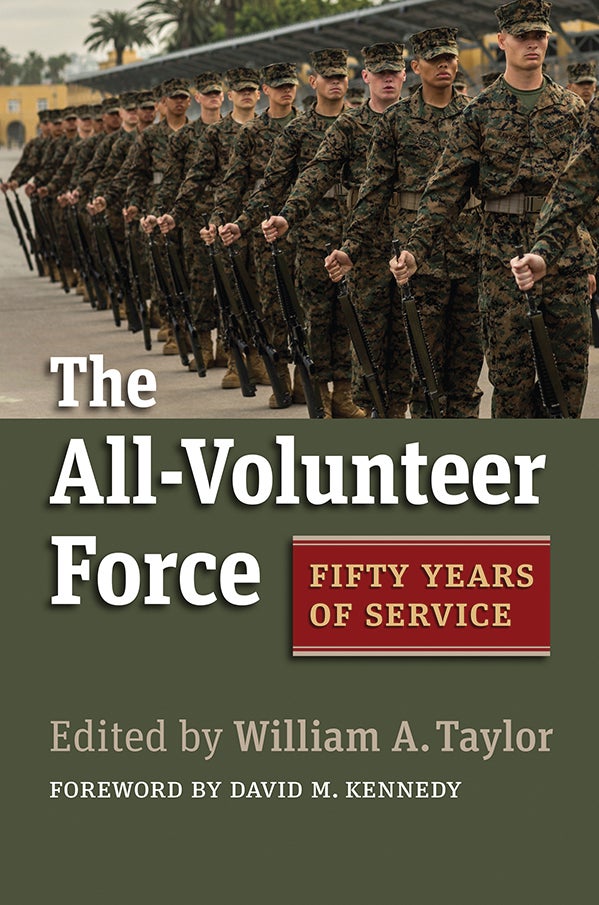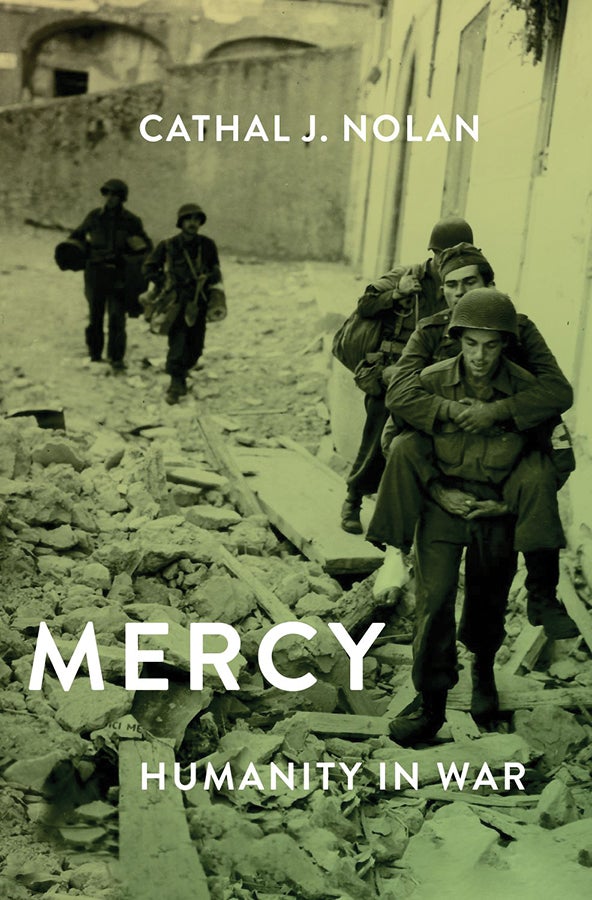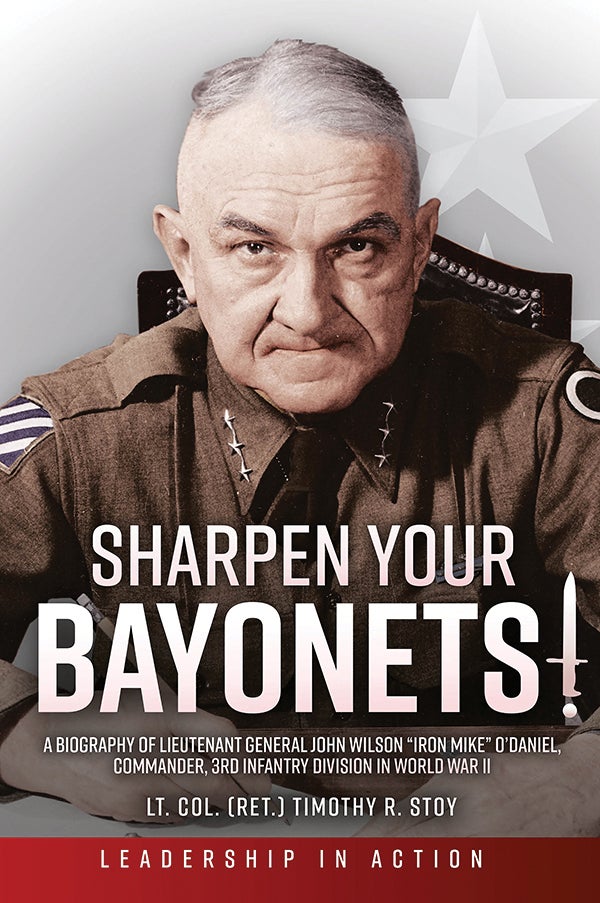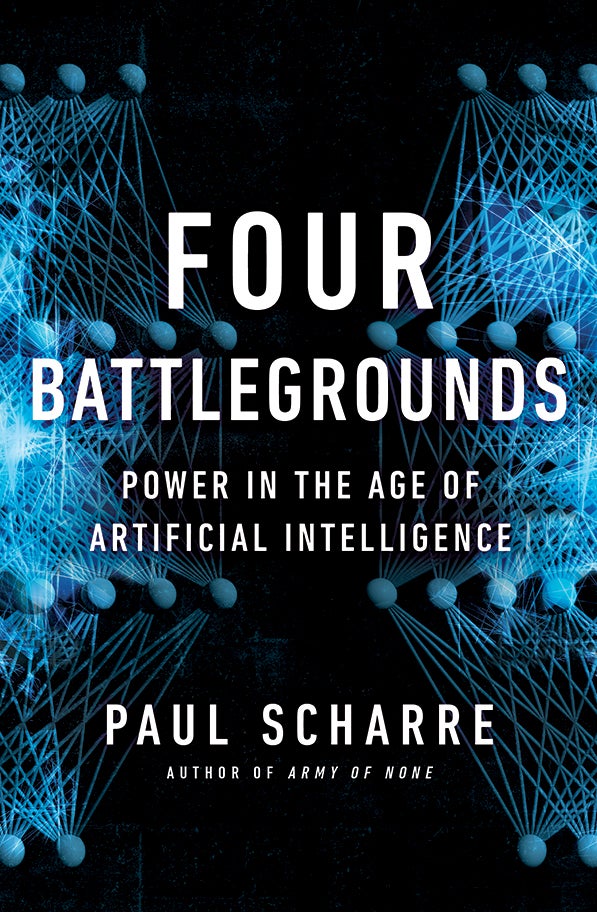Armed Forces Evolved After Draft Ended

The All-Volunteer Force: Fifty Years of Service. Edited by William Taylor. University Press of Kansas. 344 pages. $49.95
By Brig. Gen. John Brown, U.S. Army retired
The U.S. has defended itself with an all-volunteer force for 50 years. Relying on conscription during World War I and World War II and the early Cold War, Americans soured on the draft during the prolonged Vietnam War. Running for president in 1968, Richard Nixon promised to end the draft and established the Gates Commission to assist in that purpose once elected. Congress allowed the draft law to expire in July 1973.
Recognizing this anniversary, William Taylor, author of Every Citizen a Soldier: The Campaign for Universal Military Training After World War II, has assembled this fine anthology, The All-Volunteer Force: Fifty Years of Service. Drawing on recognized experts, it addresses major facets of the all-volunteer force in four parts.
In Part One, “History,” Amy Rutenberg provides historical background. Then, Michael Gibbs and Timothy Perri underscore the role of economists in deciding upon an all-volunteer force. Taylor describes the deliberations of the Gates Commission, and Beth Bailey explores issues concerning race and diversity.
Shifting to Part Two, “Results,” Kara Dixon Vuic examines the roles of women. Jennifer Mittelstadt then describes the evolution of a “wrap-around welfare state” within the military as an incentive for retention and recruitment. Titus Firmin describes the all-volunteer force as firmly middle class, with the lowest socioeconomic quintile not qualifying for and the highest quintile not interested in military service.
In Part Three, “Challenges,” retired U.S. Army Reserve Maj. Gen. Dennis Laich ponders the long-term viability of the all-volunteer force, given a shrinking pool of eligible young people with smaller percentages inclined to military service. Lawrence Wilkerson opines that the all-volunteer force is too easy to use but not big enough to win major wars. Retired Maj. Gen. Jeffrey Phillips then discusses the force’s radically increased reliance on the reserve component.
“Implications” of the all-volunteer force include an emerging culture, explored by Adrian Lewis, wherein service is no longer an expectation of citizenship. Mark Cancian explores force structure, citing the reserve component, government civilians, capital assets and contractors as alternatives to regular forces. Marybeth Ulrich examines force demographics over time, discovering reasonable representativeness but a growing civil-military gap.
As is often the case with anthologies, transition from one essay to the next can be jarring. Taylor remediates this with a conclusion tying threads together and providing overarching commentary.
The all-volunteer force has enjoyed striking successes and faced troublesome challenges. Not ideal for all circumstances, it seems a best fit that will remain with us unless circumstances substantially change.
The essays are pithy, focused, informative and well documented. Almost 800 tightly written endnotes provide a treasure trove for those wanting to do more research. Taylor also provides a chronology and paragraph-length backgrounds of the contributing authors.
As excellent as this collection is, more attention to alliances and to the “standby draft” might improve it. Most strategic scenarios envision U.S. forces fighting alongside more numerous allies. This influences the size and composition of the all-volunteer force. If the force is too small for a big war, how would a resurrection of conscription work, and what are the plans for having one? Essays on these topics might render a future version of this volume even more comprehensive.
Taylor provides an invaluable service by gathering and publishing this outstanding volume. I strongly recommend it to anyone interested in the experience of our armed forces over the past 50 years. It provides a firm foundation to contemplate the evolution of these forces going forward.
Brig. Gen. John Brown, U.S. Army retired, served 33 years in the Army, with his last assignment as chief of military history at the U.S. Army Center of Military History. The author of Kevlar Legions: The Transformation of the United States Army, 1989–2005, he has a doctorate in history from Indiana University.
* * *
A Deep Dive Into Morality During Battle

Mercy: Humanity in War. Cathal Nolan. Oxford University Press. 328 pages. $29.95
By Col. Krewasky Salter, U.S. Army retired
In Mercy: Humanity in War, award-winning author and professor of history Cathal Nolan pulls zero punches writing about combatants and leaders, and the human and inhuman decisions they make at every level of war—tactical, operational and strategic. Readers also should know that the subtitle is somewhat misleading—over 70% of the text sets the stage for, and ultimately interprets, the inhumanity of war.
Perhaps Nolan takes this approach to ensure that the examples of humanity and mercy stand out. The approach adds to the success of Nolan’s thesis: “to recognize anyone who refused immoral or illegal orders, even at grave personal risk.” Nolan believes too few combatants are recognized for the human acts of mercy they exhibit in war.
Organized into four sections, with 14 chapters, topics range as far back as the Trojan War to the current war in Ukraine. Each act of wartime mercy is generally preceded by a horrific act of inhumanity during war. Some acts of mercy are embodied within the same person who could be ruthless.
Case in point: In the chapter titled “Pity,” Nolan discusses a tactical-level story about the fighting prowess of World War I Medal of Honor recipient John Lewis Barkley, who “shot a German in the head always if [he] could.” Then, Nolan says, Barkley “refused to kill a hapless enemy, then turned his gun on his own squad to stop them from committing murder.”
In the chapter “Civilians,” one of Nolan’s operational-level examples interprets Gen. Andrew Jackson’s “no mercy” campaign against Native Americans. This chapter continues by addressing post-Civil War Western frontier pursuits of Native Americans, culminating with the Wounded Knee Massacre in South Dakota.
Within this chapter, Nolan recounts several stories of mercy, such as those of Brig. Gen. James Miller during Jackson’s era and of Capts. William Clark and John Bourke, both of whom served on the Western frontier. These three men exemplified acts of compassion and mercy toward Native Americans.
At the strategic level, Nolan does not spare commanders in chief and senior military leaders. In the chapter “Wings,” he discusses decisions by Presidents Barack Obama and Donald Trump to “loosen [drone] targeting rules as the fight against [the Islamic State group] escalated.” Both decisions resulted in increased collateral deaths of noncombatants.
Interestingly, while Nolan offers examples of mercy, what stands out is a warning from Richard Clarke, the counterterrorism director for two administrations: “Drone and other long-distance strikes created more ‘enemies for the United States that will last for generations.’ ”
Ultimately, Nolan hopes more combatants will make the decision more often “not to pull the trigger,” and those who do should be celebrated more often.
Mercy has relevancy for American combatants, political and strategic-level military leaders and American citizens who value democracy. For the men and women who serve and fight, the lesson is that winning on the battlefield may be to show more mercy toward the enemy. For political and high-level military leaders, the lesson is that with great power comes greater responsibility to understand and know the implications of decisions.
For American citizens, Nolan hopes they understand that soldiers face decisions “that those of us who do not go to war will never face.” Civilians enjoying the fruits of democracy also bear the moral responsibility of its defense, as they “send soldiers to war, license their lethal force, and ask them to do what [they] will not or … cannot.”
Col. Krewasky Salter, U.S. Army retired, is president of the Pritzker Military Museum & Library, Chicago. A former battalion commander and senior staff officer in the Pentagon, he was a guest associate curator and military subject-matter expert at the Smithsonian’s National Museum of African American History and Culture and executive director of the First Division Museum at Cantigny, Illinois.
* * *
‘Iron Mike’ Left His Mark on 20th Century

Sharpen Your Bayonets: A Biography of Lieutenant General John Wilson “Iron Mike” O’Daniel, Commander, 3rd Infantry Division in World War II. Lt. Col. (Ret.) Timothy Stoy. Casemate Publishers (An AUSA Title). 320 pages. $37.95
By Col. James Scott Wheeler, U.S. Army retired
There definitely is a need for a comprehensive biography of Lt. Gen. John Wilson “Iron Mike” O’Daniel. During his 40 years of service, O’Daniel served along the Mexican border in 1916, in World War I and World War II, in the Korean War and at the beginning of American involvement in South Vietnam. He was one of the few infantry division commanders in World War II who was not a graduate of the U.S. Military Academy, and he went on to command an Army corps.
O’Daniel is best known for his service with the 3rd Infantry Division in World War II. From 1942 to 1945, he played a major role in American amphibious operations in North Africa, Sicily, Italy and southern France. Under his leadership, the 3rd maintained its reputation as one of the best American infantry divisions in the Mediterranean and European theaters of operation.
Nearly everyone who served with O’Daniel remarked that his aggressive and uncompromising leadership style was a key attribute. He got results in all his assignments. Yet retired Lt. Col. Timothy Stoy’s biography, Sharpen Your Bayonets: A Biography of Lieutenant General John Wilson “Iron Mike” O’Daniel, Commander, 3rd Infantry Division in World War II, is the first full biography of this extraordinary combat leader.
Stoy, who has written for ARMY magazine, provides a solid outline of O’Daniel’s life from his service in the Delaware militia in 1914 to his post-retirement years. As the first biography of this hard-charging combat leader, Sharpen Your Bayonets is a useful addition to our historical knowledge of American military leaders of the 20th century and the formidable challenges they faced.
This work includes an account of two little-known periods of O’Daniel’s military service: his assignment as military attache in Moscow in the late 1940s and his important involvement with American efforts in the mid-1950s to prevent a communist takeover of Vietnam. The author does a most impressive job in describing O’Daniel’s achievements and his shortcomings. My only quibble is the lack of traditional source citations.
The book also could have provided more context to the accounts of O’Daniel’s battle experiences in World War II. For example, in Stoy’s account of the Anzio beachhead, no mention is made of the other American divisions present, let alone the British divisions that landed with the 3rd Infantry Division in January 1944. However, the chapters on O’Daniel’s involvement in the Korean War and Vietnam are rich in context and provide important insight into the United States’ entry into the Vietnam War. They are particularly interesting because it is a truly untold story.
The author clearly admires O’Daniel, but Stoy remains objective in his assessment of this larger-than-life soldier. For example, Stoy writes that O’Daniel “was the right man to whip up support for the South Vietnamese government. He was the wrong man to advise [French commander Henri] Navarre on how to conduct the war against the Viet Minh, and he was the wrong man to determine the size and organization of the Vietnamese Army. His total lack of knowledge on the challenges, history, and problems of Indochina and the French experience there prevented his providing realistic advice to Navarre on how to fight the war.”
Throughout the book, Stoy identifies the many men who shaped O’Daniel’s career and his relationships with superiors, peers and subordinates, including Gens. Mark Clark, Dwight Eisenhower, Matthew Ridgway, Lucian Truscott and Wade Haislip. This biography illuminates many of the challenges faced by O’Daniel and the U.S. Army from 1914 to 1975. For these reasons, Sharpen Your Bayonets is a valuable book.
Col. James Scott Wheeler, U.S. Army retired, is a retired professor of history at the U.S. Military Academy, West Point, New York. He is the author of several books, including The Big Red One: America’s Legendary 1st Infantry Division from World War I to Desert Storm and Jacob L. Devers: A General’s Life.
* * *
Harnessing Cutting-Edge Technology

Four Battlegrounds: Power in the Age of Artificial Intelligence. Paul Scharre. W.W. Norton & Co. Inc. 496 pages. $32.50
By Scott Gourley, Contributing Editor
As the robotics revolution of the early 2000s gives way to today’s revolution in artificial intelligence, politicians and global defense strategists are attempting to grasp the applications, implications and potential weaknesses of the innovative technology. Author Paul Scharre explores these and other issues in his excellent new book, Four Battlegrounds: Power in the Age of Artificial Intelligence.
Scharre applies his unique personal combat perspective as a former U.S. Army Ranger, combining it with research visits to key artificial intelligence conferences, labs and development programs around the world, as he leads readers along the cutting edge of militarizing AI. He credits the technology with the potential to not only fight better than humans but also to fight differently.
The “four battlegrounds” cited in the title refer to data, “compute” (computing hardware), human talent and supporting institutions—pillars the author asserts will translate to a major advantage in AI power for the nation that controls them.
In each case, the book provides readers with meticulously researched descriptions and justifications for their impact on AI. Data, for example, is identified for its value not only as a resource to be mined and analyzed for information but also for training machine learning systems. Compute is presented as an often-underappreciated contributor, with the author asserting that control over AI hardware is emerging as a key battleground between the U.S. and China, and could be one of the most critical factors in determining the future of AI. Talent reflects the human talent building the machine age and unlocking the next generation of advancements. Institutions, as the final input for national AI power, are required to transform the first three elements into practical applications.
Scharre observes that the AI revolution “poses a particular challenge for militaries, since the bulk of AI innovation is occurring outside of traditional defense industries,” adding, “To tap into the latest AI advances, the military will need to look beyond traditional defense contractors and engage start-ups.”
He goes on to identify a number of companies that are exploring systems and techniques that could be used for military and security problems at the tactical, operational and strategic levels.
The book also describes early DoD efforts to explore the technology, including activities ranging from the Defense Advanced Research Projects Agency’s AlphaDogfight Trials to Project Maven, a Pentagon effort to harness AI for the military.
Significantly, Scharre outlines the reluctant responses of some in the U.S. tech industry regarding participation in DoD programs versus “China’s model of ‘military-civil fusion,’ a concept [Chinese President] Xi Jinping had advocated to more closely integrate China’s military and civilian sectors.”
Several of the author’s AI examples highlight the dark side of the technology, including China’s oppression of its Uyghur population and expanding applications toward broader “social governance” programs, with the dystopian potential that “Left unchecked, the spread of China’s model of AI-enabled repression poses a profound challenge to global freedoms and individual liberty.”
In addition to AI competition between the U.S. and China, this timely book spotlights Russia’s 2022 invasion of Ukraine, emphasizing the explosion of related disinformation and projecting how AI-based synthetic media could exacerbate future conflicts.
Scharre acknowledges that AI is not without some weaknesses, with many systems possessing general characteristics such as brittleness, narrowness, lack of robustness, possibility of surprises and lack of explainability. Moreover, he identifies ongoing research exploring attack options on machine learning systems, targeting multiple stages in the AI learning process that could have applications in areas like future tactical camouflage.
“AI scientists are like explorers in the wilderness,” he writes, “breaking new ground without a map and without an entirely clear sense of what they are looking for.”

